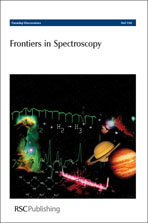The resolution of any spectroscopy experiment is ultimately limited by the observation time. The ability to produce slow, yet intense molecular beams significantly increases the attainable observation time and thus the resolution in the spectroscopic experiment. Such slow molecular samples are ideal starting points for novel precision spectroscopy experiments aiming at, for example, determining the time variation of fundamental constants or the effect of parity violation in chiral molecules. We consider the use of decelerated chiral polar molecules to perform very high-resolution rotational spectroscopy aiming at measuring the energy difference of the two enantiomers due to parity violation. Using molecule velocities around 20 m s−1 and a microwave resonator consisting of 50 cm-reflectors (in diameter) and a reflector distance of up to one meter, spectral resolutions on the order of only a few Hz become feasible using Fourier transform microwave spectroscopy. This should be sufficient to resolve the parity-violation effect for species containing heavy atoms, such as SOCH3Ph and SeOFI. We also discuss the possibilities to use trapped molecules for high-resolution spectroscopy—and work out their advantages, such as long observation times, and their disadvantages, such as line broadening due to the inhomogeneous trapping fields.
You have access to this article
 Please wait while we load your content...
Something went wrong. Try again?
Please wait while we load your content...
Something went wrong. Try again?

 Please wait while we load your content...
Please wait while we load your content...